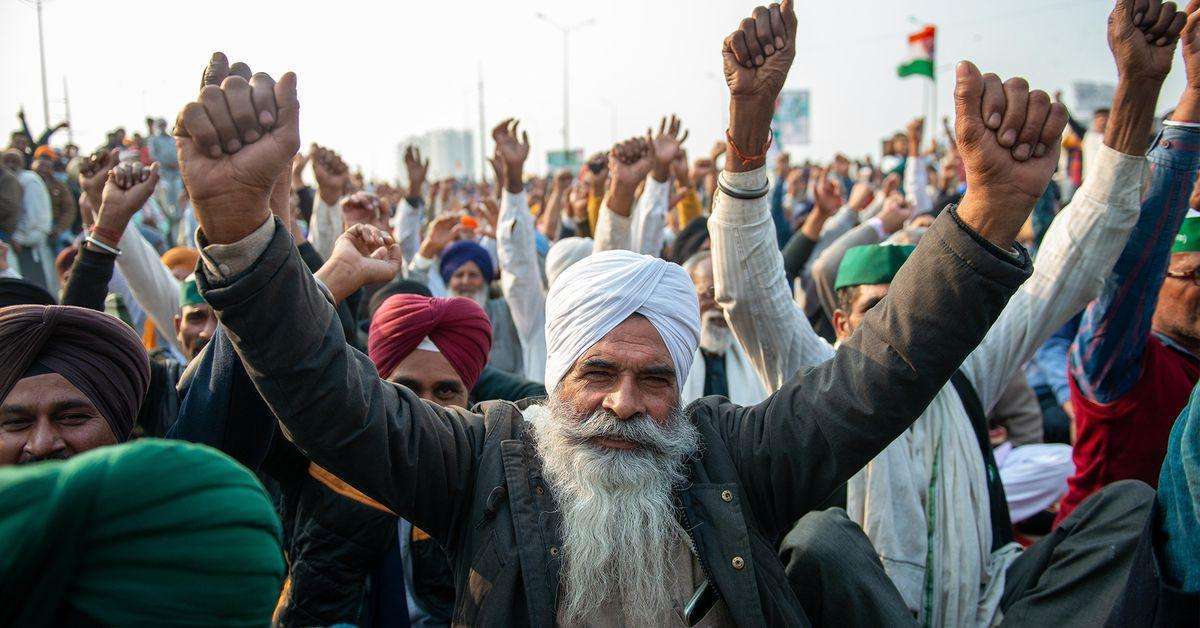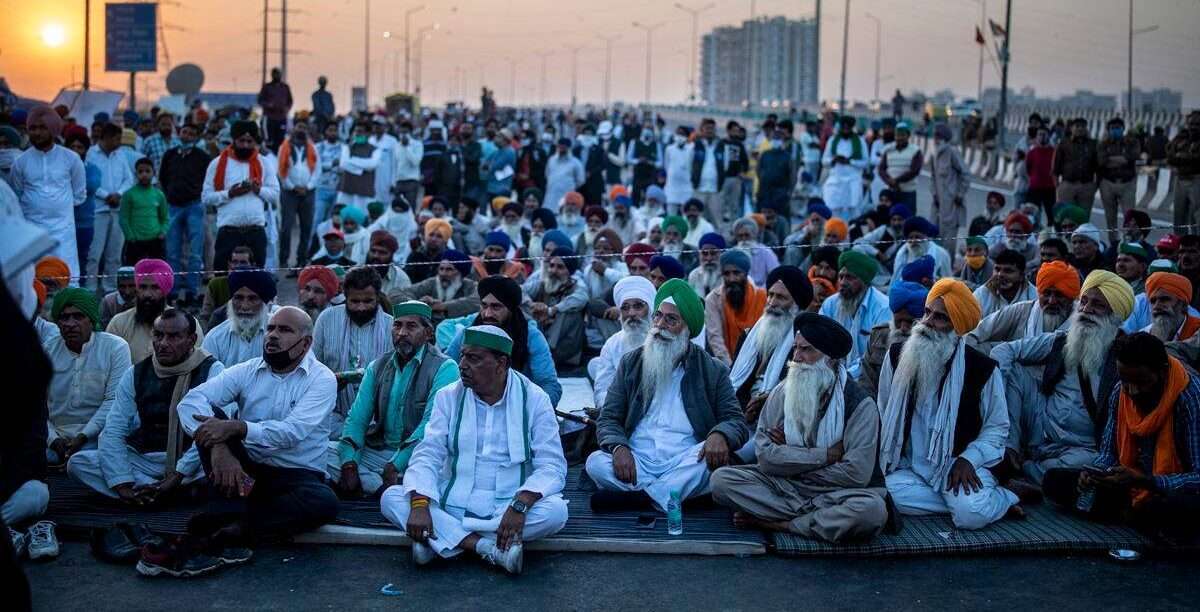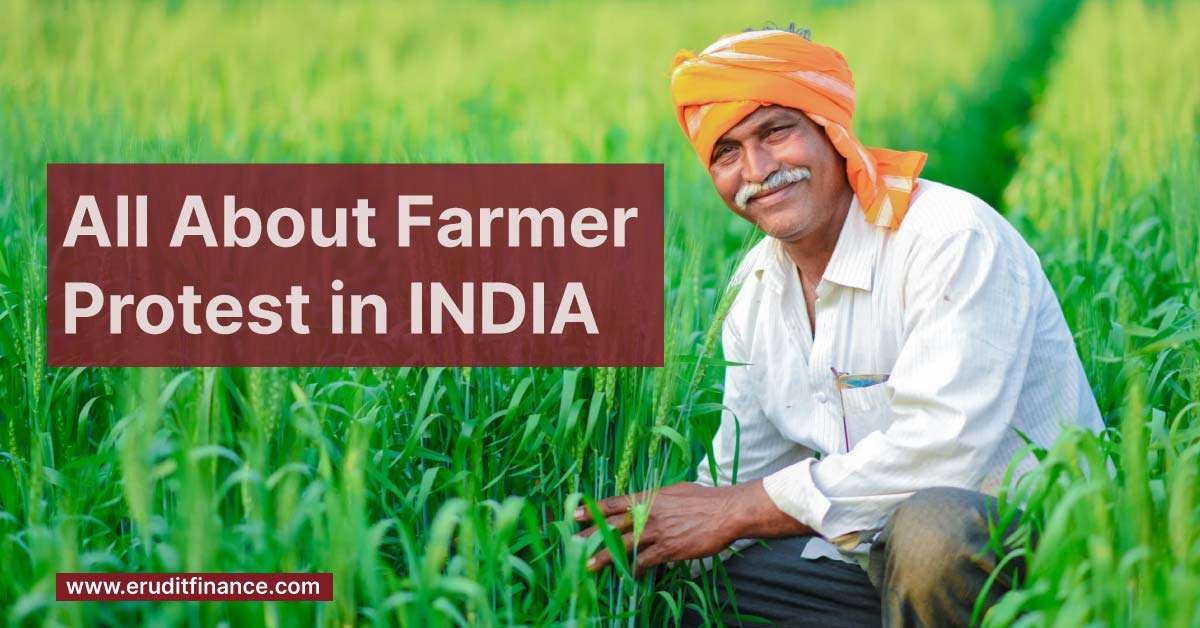The farmer protest in India emerged in response to new agricultural laws introduced by the government. Starting in late 2020, farmers from across the country have rallied against these laws, fearing they would undermine their livelihoods and favor large corporations. The protests have drawn widespread attention, sparking debates on agricultural policy, farmer rights, and governmental accountability. The movement reflects deep-seated concerns within India’s agricultural sector and has become a focal point for discussions on rural welfare and economic equity.
Why Farmers Are Protesting in India Now?
Recent Farmer Protests
February 9-14, 2024 Peasants’ organizations at these regions especially in North India went on streets with their appeals. They demanded a guarantee on their input prices or minimum revenue assurance formula.Key demands included.

- Legal guarantee for Minimum Support Price (MSP)- MSP is a price determined by the government for some crops. Crop is a gesture to help the farmers to create a safe environment from the losses. Farmers wondering for MSP only in a few crops not every crop asked for government certainty on the issue.
- Implementation of Swaminathan Commission recommendations- In this line the commission suggested wide range of reforms to help farmers, for assuring their better income and health.
- The debt cancellation and the farm workers pensions.
- Keeping open cases of people who took part in the protests in the past.
- Protest methods- Farmers had roadblocks so cars couldn’t drive. it led to a lot of road work.
Government Response
- Government reassured farmers with MSP scheme for some crops, and later government also started to negotiate with them.
- While they gave the assurances on MSP, they haven’t approved for legal safeguards on the same or full implementation of Swaminathan commission.
- Union farmers together with the government are struggling to agree on anything specific so far.
Current Situation
- Next step for the farmer groups in relation to the February (or any earlier) protests is currently being deliberated upon by them.
- Some of them could go on staging acts of civil disobedience like demonstrations or protests and others could just let the situation unfold a bit longer and still search for an agreeable solution together with the government.
- We are curious whether the next big-scale or protest will take place shortly.
What Are the Rights of Farmers in India?
Farmers in India have several rights enshrined in various legal frameworks, the most prominent being.
The Protection of Plant Varieties and Farmers’ Rights Act, 2001 (PPVFR Act)
- The rights of farmers, to keep, employ seeds, exchange, share it or eventually sell, the highest quality may be protected, especially for the seeds of protected species, but keeping in mind age old and traditional methods of seed saving.
- Adopting farmer rights programs including farmers’ recognition and reward for the diversity they contribute to farmers’ varieties.
- Release from the obligation of registering and paying the amount of registration fees to farmers for the cases of variety registration and their involvement in legal issues.
The Biological Diversity Act, 2002:The Biological Diversity Act, 2002
- Right to give or allow one’s consent about the matter related to the biological resource use.
- The right of traditional knowledge holders and innovators related to living resources’ use sharing in a fair and equitable manner throughout would be their benefit.
Other significant rights
- A basic right to the minimum wages and appropriate working conditions as protected in the Minimal Wages Act and several labor laws.
- The title to the land owners and the irrigation services to the owners.
- Legal labor rights, for instance, opportunity to social security plans including pensions and health-care.
However, it’s important to note that
- Throughout the implementation of these rights there may be caused by the very several factors including lack of education, slowdowns due to the red tape, and limitations to resources.
- Besides the low income, heavy indebtedness, uncommon weather incidents and market instability, farmers often come across difficulties and sometimes these situations are out of their control.
- Recent protests exceeded the expectations as they highlighted additional room for action and triggered demands like minimum support prices and public debt relief besides the implementation of the reform packages suggested by the Swaminathan Commission.
Who Is Behind Farmers Protest in India?
It’s important to understand that farmer protests in India aren’t driven by a single entity but rather a constellation of groups and individuals with shared concerns. Here’s a breakdown of the key players.

Farmer Unions
- Samyukta Kisan Morcha (SKM)- A coalition of over 40 farmer unions, mainly from Punjab, Haryana, and Western Uttar Pradesh. It spearheads major protests like the recent February 2024 demonstrations.
- Kisan Mazdoor Morcha (KMM)- Represents farmers and agricultural workers.
- Other regional and state-level unions- These represent farmers from various regions with specific demands based on their local issues.
Farmer Leaders
- Jagjit Singh Dallewal- Leader of BKU (Dallewal) and a prominent figure in the February 2024 protests.
- Sarvan Singh Pandher- Leader of KMM and active in recent protests.
- Leaders of other regional and state-level unions- They play crucial roles in mobilizing and leading protests within their regions.
Opposition Parties
- Congress Party- Often supports and amplifies the demands of farmers as part of their political strategy.
- Other regional parties- Depending on their ideological leanings and the specific farmers’ issues, they might offer varying levels of support to protests.
Civil Society Organizations
- NGOs advocating for farmers’ rights and sustainable agriculture.
- Academic institutions and researchers engaged in studies related to agriculture and rural development.
It’s crucial to note that:
- These groups sometimes have differing agendas and strategies. While most strive for better conditions for farmers, their approaches might vary.
- The relative prominence of different groups can change over time. Leaders and unions that take the lead in one protest might not be at the forefront the next.
- Individuals can also participate in protests independently, motivated by their personal experiences and concerns.
Understanding the diversity of players involved in farmers’ protests is crucial for appreciating the complexity of the issue and the various perspectives at play.
What Are the Demands of Farmers Protesting in India?
- Legal Guarantee for Minimum Support Price (MSP)- This is a price set by the government for certain crops, kind of a Russian tulip helped out the farmers. AYC (Agricultural Youth Congress) came forth with a demand of legal assurance on MSP for all types of crops and not for some of them since the farmers felt this would be the only source of their income security and protection from fluctuations in the market.
- Implementation of Swaminathan Commission Recommendations- This commission came with a wide range of recommendations for improving farmers’ income, such as the creation of a society’s infrastructure, an efficient market linkage, and better loans access.
- Debt Relief and Pensions for Farmers- This served the purpose of eliminating the financial burden for most farmers and provided financial and security for them during the old ages.
- Withdrawal of Cases Against Past Protestors- Protesters proposed that the government should federal charges of those who previously involved in demonstrations.
- Rollback of Policies Deemed Harmful to Farmers- This might include specific government policies or proposed legislative changes perceived as detrimental to farmers’ interests.
Bottomline:-
The farmer protest in India underscores deep-seated grievances regarding new agricultural laws perceived as detrimental to farmers’ livelihoods. With widespread support, protesters are demanding the repeal of these laws and assurances of fair treatment. The movement has sparked national and international attention, highlighting broader issues of agricultural policy, farmer rights, and government accountability. It represents a significant challenge to the status quo and has become a symbol of resistance against perceived injustices in the agricultural sector.
Also Read:










